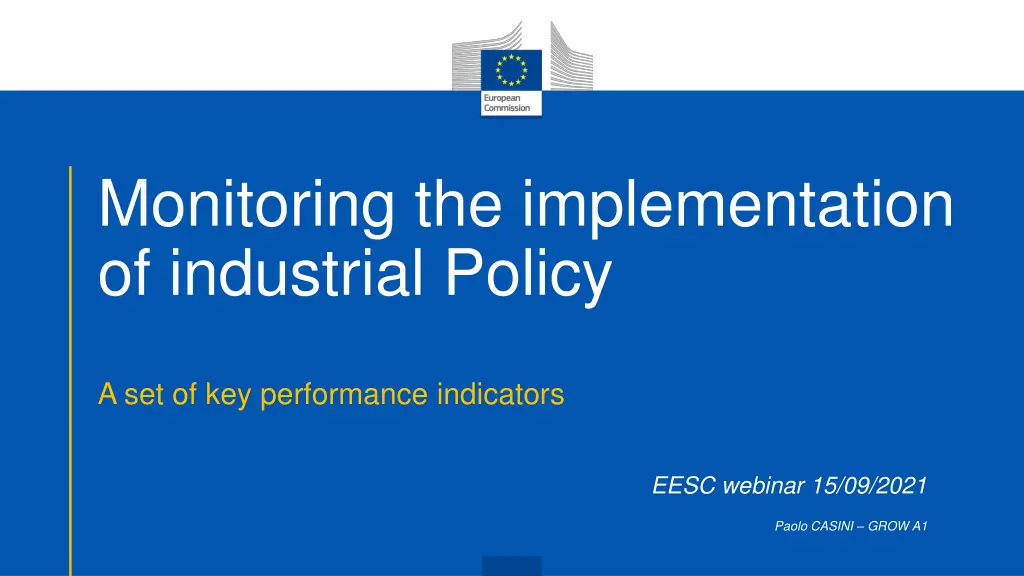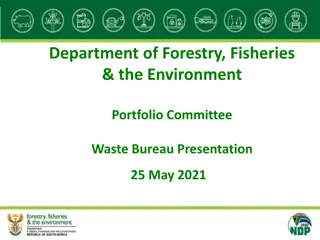
Key Performance Indicators for Monitoring Industrial Policy Implementation
Discover the importance of monitoring industrial policy through key performance indicators (KPIs). Explore areas covered by KPIs, the main technical criteria for selection, and the evolving nature of KPIs in driving policy priorities and analysis techniques.
Download Presentation

Please find below an Image/Link to download the presentation.
The content on the website is provided AS IS for your information and personal use only. It may not be sold, licensed, or shared on other websites without obtaining consent from the author. If you encounter any issues during the download, it is possible that the publisher has removed the file from their server.
You are allowed to download the files provided on this website for personal or commercial use, subject to the condition that they are used lawfully. All files are the property of their respective owners.
The content on the website is provided AS IS for your information and personal use only. It may not be sold, licensed, or shared on other websites without obtaining consent from the author.
E N D
Presentation Transcript
Monitoring the implementation of industrial Policy A set of key performance indicators EESC webinar 15/09/2021 Paolo CASINI GROW A1
Monitoring the implementation of Industrial Policy The Council Conclusions A recovery advancing the transition towards a more dynamic, resilient and competitive European industry (16 November 2020) CALLS on the Commission to define key performance indicators for monitoring the industrial strategy and competitiveness [ ], including taking into account investment trends, and comparing those to other world regions . The objectives of the EU's industrial policy [should] be reflected in sound indicators, in particular concerning industrial competitiveness, industry's contribution to the green and digital transition and the Union's resilience and strategic autonomy while preserving an open economy.
The areas covered by the KPIs Headline indicators Short term indicators Thematic indicators Indicators by Ecosystem Provide a synthetic overview of the main trends of the EU economy and benchmarking against other countries Describe the impact of the COVID crisis on the economy and provide a forward-looking analysis; Economic resilience Digital transition Climate neutrality and circular economy Single Market integration SMEs International dimension Size and performance Green transition Short term indicators International dimension Resilience (investments and dynamism)
The main technical criteria driving the selection of KPIs Availability of data from public sources, to ensure reliability, transparency and replicability; The set of KPIs takes into account other thematic scoreboards that monitor specific policy areas. Single Market Scoreboard, The European Innovation Scoreboard, DESI, the Circular Economy Monitoring framework, the Eco-innovation Scoreboard, the Resilience Dashboards. Availability of data for international comparisons; Length of the time series, to follow the evolution over a sufficiently long time horizon; It complements them by providing an overview of the most important policy areas relevant for industry. Timeliness of the data; Clarity and ease of interpretation.
A living set of KPIs New data sources More timely information More granular information New data sources Evolving policy priorities New data analysis techniques Ecosystem approach Microdata Nowcasting New data analysis techniques Evolving priorities Flexible and collaborative approach with other institutions and MS Mega-trends that go beyond industry The set of KPIs needs to adapt continuously
Headline indicators Value added in Industry (including construction): annual % growth Source: World Bank national accounts data GDP per person employed: constant prices, total economy, % annual growth. Source: AMECO
Overview of market expectations Confidence indicator Substantial improvements across the board. Very significant rebound of tourism. Textiles is the only ecosystem for which the confidence indicator remains clearly negative, due to subdued demand. Source: Source: European Commission analysis based on data by the Joint Harmonised EU Programme of Business and Consumer Surveys. Note: For Retail , Agri-food , Proximity, Social Economy and Civil Security , Energy-Renewables , and Health , data coverage is partial, so they are depicted using dotted lines and the related values have to be interpreted with caution. Data for Cultural and Creative Industries may underestimate the impact of the crisis, as data for some relevant sectors are not available.
Short-term indicators (1/3) Turnover: % change with respect to the same month in the previous year Source: Eurostat Short-term statistics Industrial Production: relative to January 2015. Source: OECD
Short-term indicators (2/3) Declaration of bankruptcies and registrations of businesses: index 2015=100. Seasonally adjusted data. Registrations of Business are increasing; However, bankruptcies are also increasing, although their level is still relatively low, most likely due to measures to support the economy. Source: Eurostat, experimental statistics, incomplete coverage of EU
Short-term indicators (3/3) Permanent, temporary and self-employment: change with respect to same quarter in the previous year. Age 15-64. Source: Eurostat, LFS [lfsq_egaps,lfsq_etgaed]. Data not seasonally adjusted
Economic resilience Public Investments: Net Fixed Capital Formation as a share of GDP. Data for 2020 based on estimates. Source: Ameco Private Investments: Net Fixed Capital Formation as a share of GDP. Data for 2020 based on estimates. Source: Ameco
Value added and employment by ecosystem Value added and employment, 2018 Source: European Commission analysis based on Eurostat [nama_10_a64] and [nama_10_a64_e]. Data refer to 2018, most recent year available.
Export intensity by ecosystem Export Intensity: extra EU exports as percentage of value added Source: European Commission analysis based on Eurostat, EU trade since 1988 by CPA 2.1 [DS- 1062396], last update 18 March 2021.
GHG emission intensity by Ecosystem GHG emission intensity (2018): change in GHG emissions and changes Value Added (2015- 2018) The size of the bubble represents GHG emission intensity in 2018. The ecosystem Energy-renewables does not include emissions from energy generation, as they are assumed to be zero. The grey bubble represents the full energy sector (NACE D35), included for the sake of comparison. Source: European Commission analysis based on Eurostat.
Thank you for your attention Paolo CASINI GROW A1 paolo.casini@ec.europa.eu





















